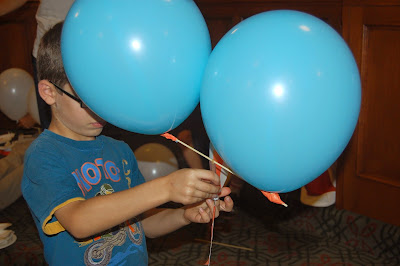Octopus Chromatophores
Today we learned about color changing animals and how they're able to expand or contract special pigment sacs called chromatophores in their skin, in order to give the overall visual effect of having changed color. In reality, they have just chosen which pigments to expand and which ones to shrink, but all the pigments are there! We talked about how octopuses do this and how they also have papillae in their skin that can change the texture of their skin from smooth to rough or bumpy, which gives them an added camouflage benefit.
To demonstrate how this works, I programmed a simulation of chromatophores expanding and contracting to match their environment using Scratch. You just click on the words Brown, Red, or Yellow to make the background change, and watch as the chromatophores change by expanding or contracting to emphasize that color! Click on the picture to go to the Scratch website and play with this simulation.
Our hands on project today was pretty easy--to build a chromatophore that you could expand or contract with string, balloons, cardboard, scissors, hole punchers and label stickers. The label stickers go around the balloons where you plan on poking a hole for the string--they help protect the balloon from tearing.
Kids tried to make a design that would allow them to expand the balloons and also some used craft sticks to be the papillae that rise up and create bumpy texture.
The kids found the concept of chromatophores challenging, but the project itself was kind of easy. Well, I shouldn't say "easy"--it's not easy getting holes in the balloons, or the cardboard!If you'd like to check out some good books from the library about octopuses and camouflage, the ones I used in my presentation were:
- Color-Changing Animals by Valerie Yaw
- Octopuses by Melissa Gish
Also check out these great websites:
- How do chameleons and other creatures change color? by Devi Stuart-Fox at Phys.org. Watch the cool video in this article!!
- Insid the Mind of the Octopus by Sy Montgomery, published in Orion Magazine. This article talks about how the octopus's brain works, including how it can "see" colors with its skin despite having color-blind eyes!













Comments
Post a Comment